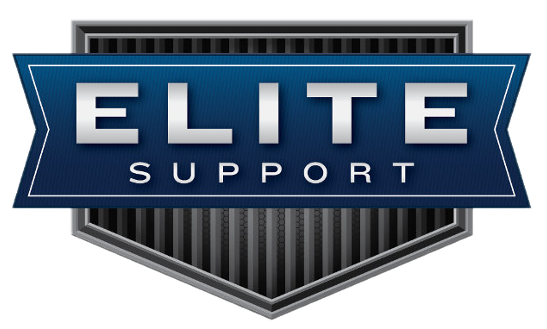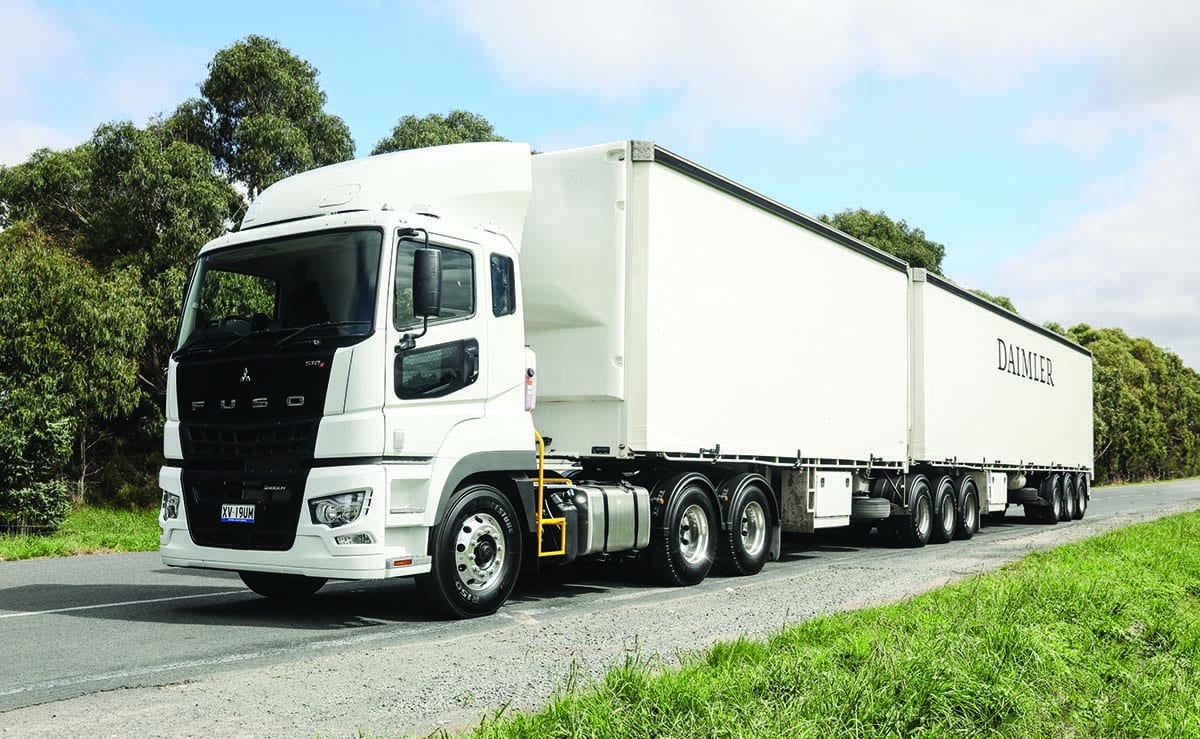Fuso has been building trucks for 90 years and its most powerful version to date is now on the Australian market.
The Fuso Shogun is known as the Fuso Super Great in its homeland of Japan and now with the availability of a 510hp version of the Daimler-sourced 13-litre engine, that rather awkward moniker is actually quite an apt description of the Fuso heavy hitter.
Ideally suited to metropolitan and intrastate transport, the Shogun 510 is rated at 63 tonnes Gross Combination Mass and is capable of hauling a single or double trailer set or working in a tipper and dog combination.
It is available as a 6×4 prime mover or as a rigid and air rear suspension is standard equipment on both.
The Shogun has been around for a couple of years with sub-500hp power and after the pandemic hiatus it’s refreshing to actually get behind the wheel of a production model which isn’t wrapped in camouflage.
The plain white livery of the test unit is contrasted by the matt black front panel.
Fuso had a record sales year in Australia in 2021, setting a new benchmark of 4,770 units across its entire range, acknowledging that the total consisted of more Canters than Shoguns, even though Fuso increased its market share in all segments including the Heavy Duty category.
The 510hp Shogun is the result of strong representations by local senior Daimler executives including Daimler Truck and Bus Australia President and CEO Daniel Whitehead, who put forward the business case that the Australian market would respond favourably to a Japanese truck with 500-plus horsepower, particularly in prime mover applications.
In addition to the 13-litre power plant, the Fuso Shogun range is available with 8- and 11-litre engines with power outputs ranging through 360, 400, 460 and now 510 horsepower.
Australia and New Zealand are the only countries where the 510 version of the Shogun is available and with its introduction late in 2021 Fuso became the only Japanese manufacturer with a heavy-duty Euro 6 truck with more than 500hp.
But as in most conversations about engines, it’s not the headline horsepower of the shiny badge on the cab that matters. It‘s the torque required to haul Australia’s heavy loads up and over the landscape with acceptable point to point times without drinking buckets of diesel fuel.
In this situation the Shogun shines. You can use any analogy to pulling you like, but this truck is impressive from the moment the parking brakes are released and Drive mode is engaged.
The 510hp engine has been designated the Daimler OM471 and delivers its maximum torque of 2,500Nm from as low as 1,100rpm with 84 per cent of that maximum torque still available at 1,700rpm. At the other end of the torque curve 86 per cent of maximum torque is available from as low as 800rpm.
Maximum power is at 1,600rpm and much of the engine’s performance can be accredited to its finely developed high pressure fuel system in combination with an asymmetric turbocharger.
The 12-speed single overdrive automated manual transmission is well-proven across its applications in a number of Daimler products and has three main modes of Auto, Economy and Heavy, in addition to a crawler mode in which speed is regulated with the brake pedal rather than the accelerator and is ideal for connecting trailers or reversing into loading docks.
The transmission is programmed to deliver the maximum benefit of the engine’s prodigious torque and even on long climbs hangs on to higher gears to get the most out of each drop of fuel. When it does downshift, the function is ultra-smooth with negligible loss of momentum.
In sections of road where the ‘grunt’ isn’t needed, the Eco-Roll feature now common on most automated manuals makes its own contribution to fuel efficiency and reduces cabin noise as well. The transmission also has a ‘rock free’ mode which shuffles the drive between forward and reverse in an effort to get the truck back onto solid ground should it become bogged.
This feature will be popular with rigid tipper applications, along with the optional manual diff locks.
In line with efficiency of componentry, items shared with its European cousins are not limited to the driveline. The Shogun has a similar steering wheel to the one found in the Actros, albeit with three triangles instead of a three pointed star on the air bag padding.
The Japanese standard for headlight and turning indicator controls is to locate them on the right-hand side of the steering column which is, in the Shogun, found in the same location of the control lever for the automated transmission.
European customers, however, have a preference for these controls to be on left so it seems the Fuso engineers simply mirrored entire European switch assembly over to achieve this, which results in the engine brake (retarder) control needing to be pushed forward rather than being pulled back as experienced in the Mercedes-Benz Actros that we were driving on the return journey.
The three-stage engine brake has a maximum retardation power of 411kW.
Although it will do it itself on steeper hills, a nudge on the transmission selector to drop down a gear or two assists maximising engine braking.
Speaking of light switches, in addition to its LED daytime running lights, the Fuso Shogun has Intelligent Headlight Control for its LED headlights which automatically dips to low beam at night when other traffic is approaching and then flicks back to high beam once the road ahead is clear.
The 510 Shogun isn’t just all about hill-conquering torque and power, and the safety package is equal to most European and Japanese trucks in the category and includes an upgraded Advanced Emergency Braking System (AEBS) and the enhanced Active Attention Assist (AAA) system that can detect when the driver is showing fatigue or lacking concentration on the road.
All Shogun models benefit from the latest generation of the AEBS that now uses camera and radar camera technology, making it able to come to a stop in the event the driver does not respond to an audible warning.
This system is standard on all Shogun models, as is radar-based adaptive cruise control. Lane departure warning, a driver airbag, electronic stability program (ESP) and Hill Start System (HSS) are also standard in the Shogun safety package.
Side guard assist is available as standard on long wheelbase rigid models.
The Japanese heavy rigid and prime mover offerings to the Australian market is an interesting landscape.
Isuzu has removed itself from the category by ceasing to persevere with the Gigamax and its wheezy and relatively inefficient 15.7-litre engine which only managed to provide 512hp.
Volvo Group has steadfastly refused to allow anything other than the 11-litre engine in its otherwise very capable UD Quon, although what happens once Isuzu completes its global takeover of UD remains an area of some conjecture and all is likely to be revealed at the Tokyo Motor Show in 2023.
This leaves Hino currently maxing out at the 480-horsepower available from the 13-litre engine in its also capable 700 Series.
Daimler Trucks Australia have put playing games behind them in opting for the 510 horsepower rating in the big Fuso giving it the current horsepower and torque crowns for Japanese trucks — for the moment.
COPYRIGHT BELONGS TO ORIGINAL ARTICLE: https://www.primemovermag.com.au/rise-to-power/




